
Ah, summertime!
The lightning bugs are hovering over the lawn in the evenings, the hot weather has us all drinking gallon upon gallon of ice-cold switchel, and everyone is planning their vacation.
Whether it’s a trip to the mountains or a stay at the shore, summertime finds us all packing up the car and getting out of town for a much-needed respite.
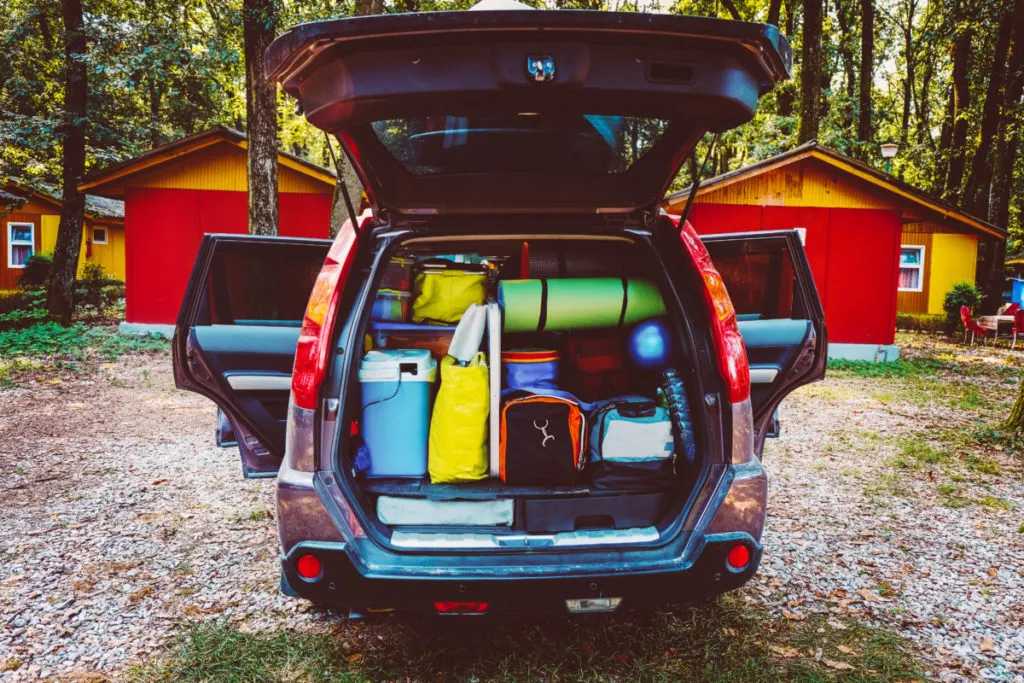
As gardeners, we’ve all got one more item to-do on our preflight checklist – figure out how to water the garden while we’re away.
While it’s one thing to head out of town for a long weekend, when your trip extends to a week or more, you need to think about how you’re going to keep your plants happy and healthy while you’re away.
Fear not; with this handy post, even the most dedicated gardener can step away for a bit and come back to a thriving garden.
Don’t Forget the Fungi
One of the best things you can do for your garden while you’re away can be taken care of right when you start your garden at the beginning of the season.
Mycorrhizae.
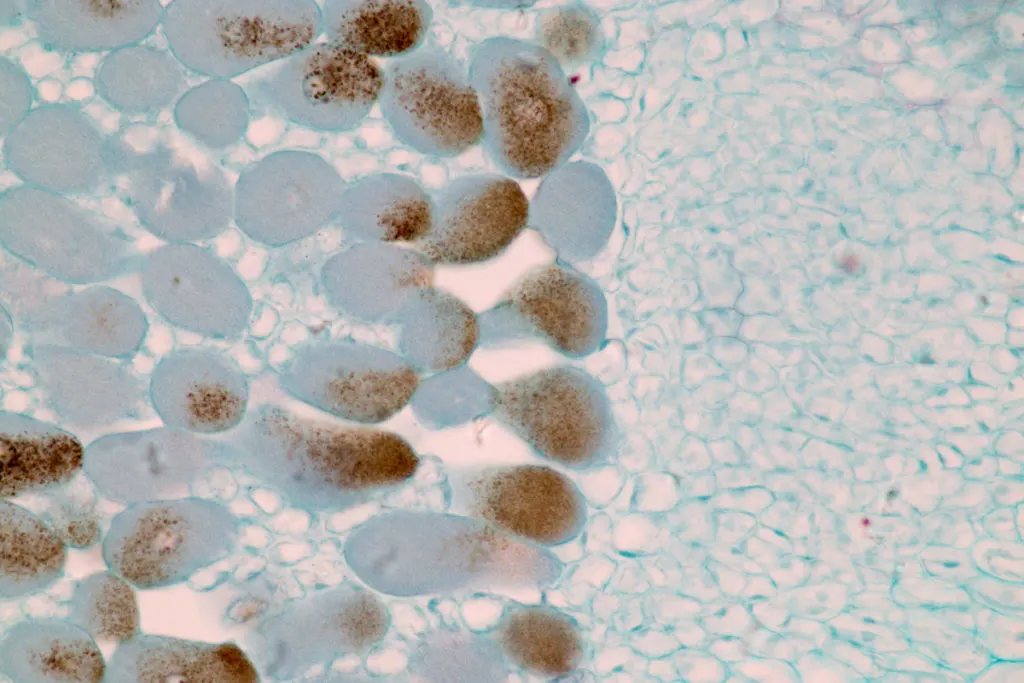
These beneficial fungi embed themselves in the roots of your plant, increasing the root surface area several hundred-fold. This means your plants are much better suited to retaining water. The roots grow deeper and fuller, taking longer for them to dry out.
If you didn’t have a chance to inoculate your plants at the beginning of the season, don’t worry; you can inoculate your garden a day or two before you leave.
I went away for a long weekend and inoculated my plants the morning I left. When I returned home four days later, I was shocked to find not only that my plants hadn’t dried out but thriving plants that had doubled in size.
I’m a firm believer in using mycorrhizae in your garden. Aside from creating a root zone that makes your plants more draught-resistant, the added benefits of increased yield size and pest resistance make adding mycorrhizae to your annual planting routine a no-brainer.
To learn more about these helpful little fungi, check out my post – Why You Should Add Mycorrhizae To Your Soil – Stronger Roots & Healthier Plants
I’ve only used one brand of mycorrhizae so far, Big Foot Mycorrhizae Concentrate, so I can’t attest to which brand is better than the others. I’ve had excellent results both in my garden and houseplants with this particular inoculant, though.
Before You Leave, Prep First
There a few things you can do that will help your garden immensely before you head out of town. If you set up any temporary irrigation system, these extra steps will ensure the success of your efforts. And both should be done as close to the time you plan to leave as possible.
Weed Your Garden
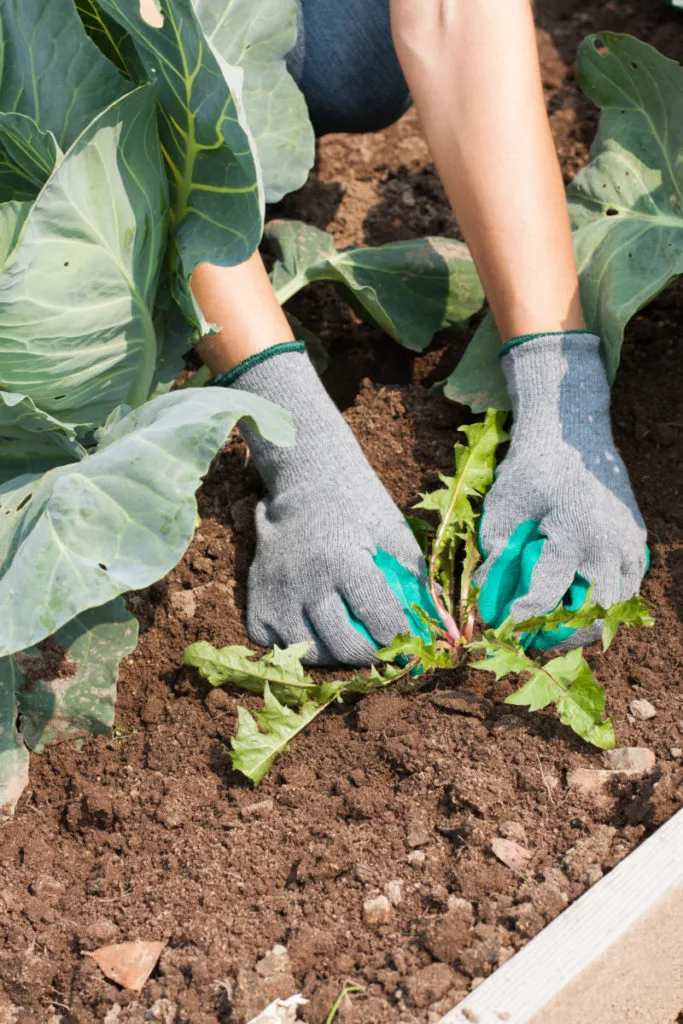
I know, I know, it’s one more thing you have to do when you’re trying to get ready to head out of town. But remember, those weeds are just as thirsty as your plants are. By weeding as close to your departure as possible, you’re ensuring that your plants won’t have to compete for water while you’re away.
Soak the Entire Garden
Before you leave, spend some time deeply watering your garden. You really want to soak the ground and push the water deep down into the soil. Doing so will encourage the roots to stretch deeper too. Deep roots take longer to dry out.
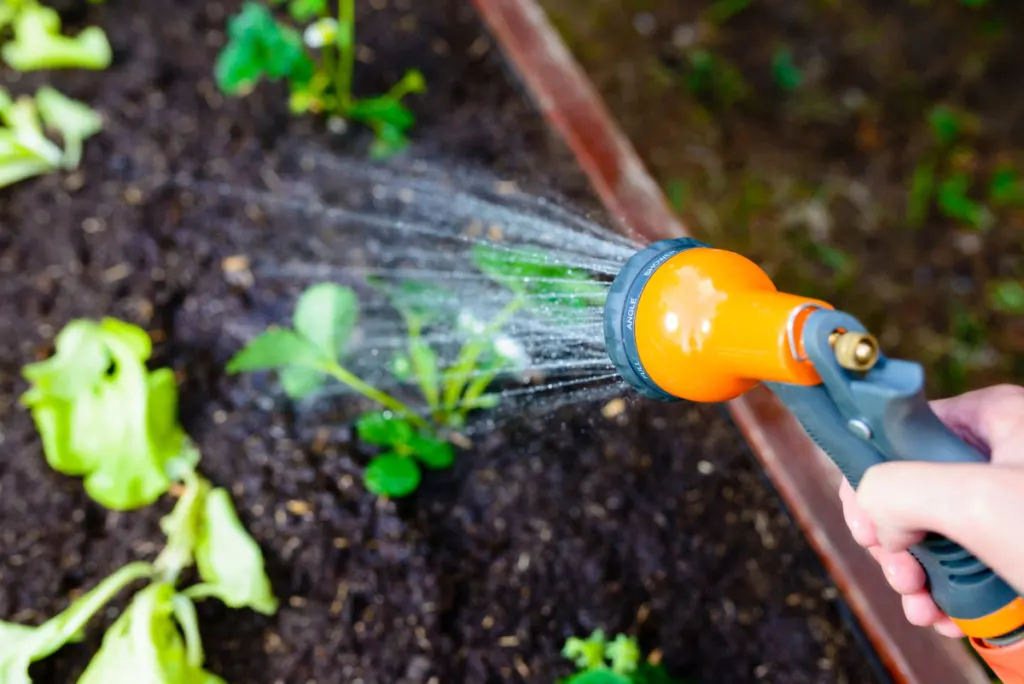
If you have a soaker hose in your garden, this would be the time to go ahead and water indiscriminately. You want the ground to be almost at the point of being muddy, but not quite.
Mulch Everything
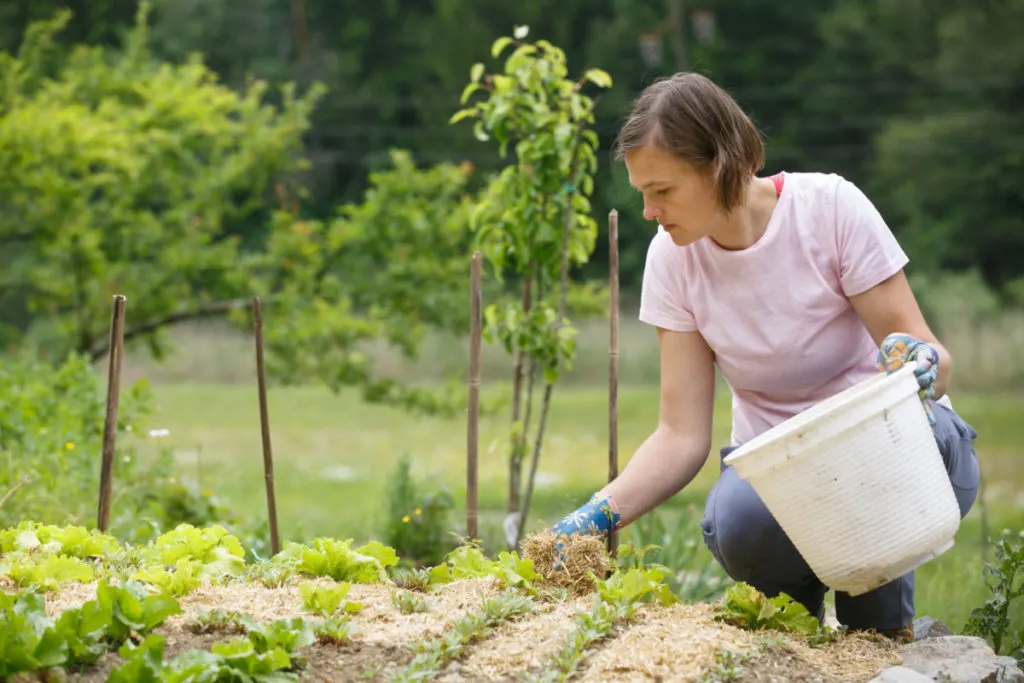
Once you’ve watered your garden well and have thoroughly soaked the ground, lay down a thick layer of mulch to hold the water in the soil. Here are some great mulch options.
If mulching is already a part of your gardening routine, consider topping up your mulch with an extra layer to lock in the water.
Add worm castings or compost to the mulch. Both will help to hold in moisture while adding nutrients back into the soil.
Pick Produce
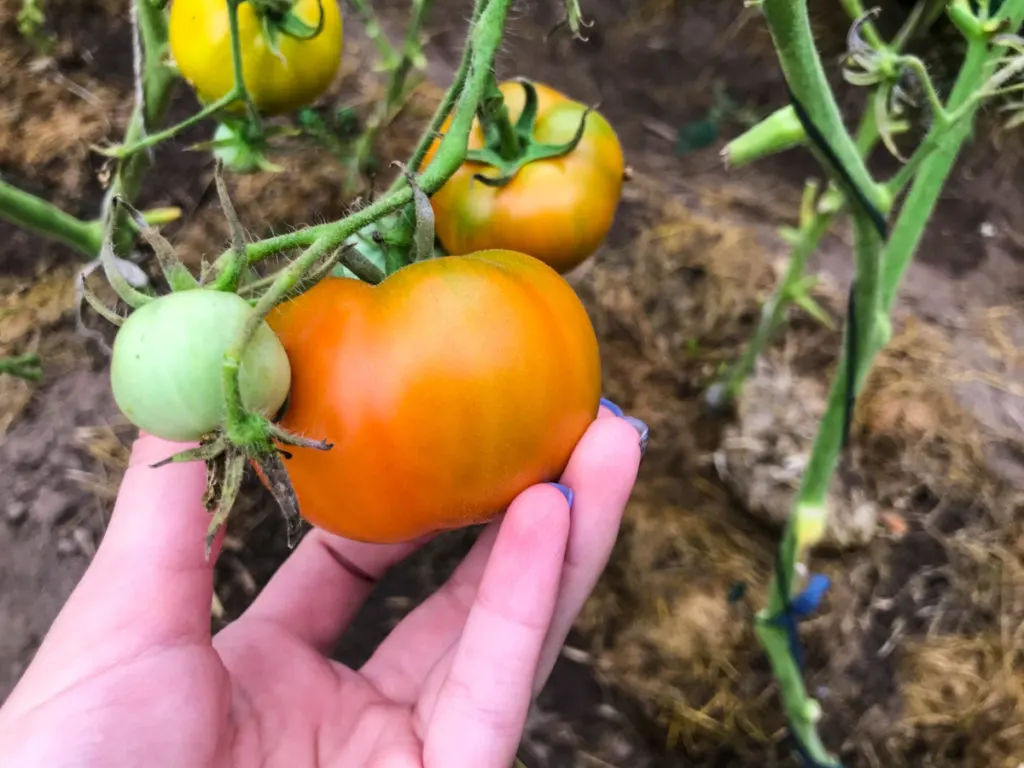
Picking ripe or nearly ripe veggies will ensure that your plants continue to produce while you’re away. If too much produce continues to mature on the vine, your plants will slow their production. Even smaller veggies like baby zucchini, peas, beans, etc., should be picked before you hit the road.
How To Water Plants While You’re Away
Timer and Irrigation
Probably the easiest and best way to take care of your garden from afar is with a timer and some form of irrigation system. Whether that’s a drip hose or a good old-fashioned lawn sprinkler, this set it and forget it method of watering ensures your garden will receive a daily dose of water.
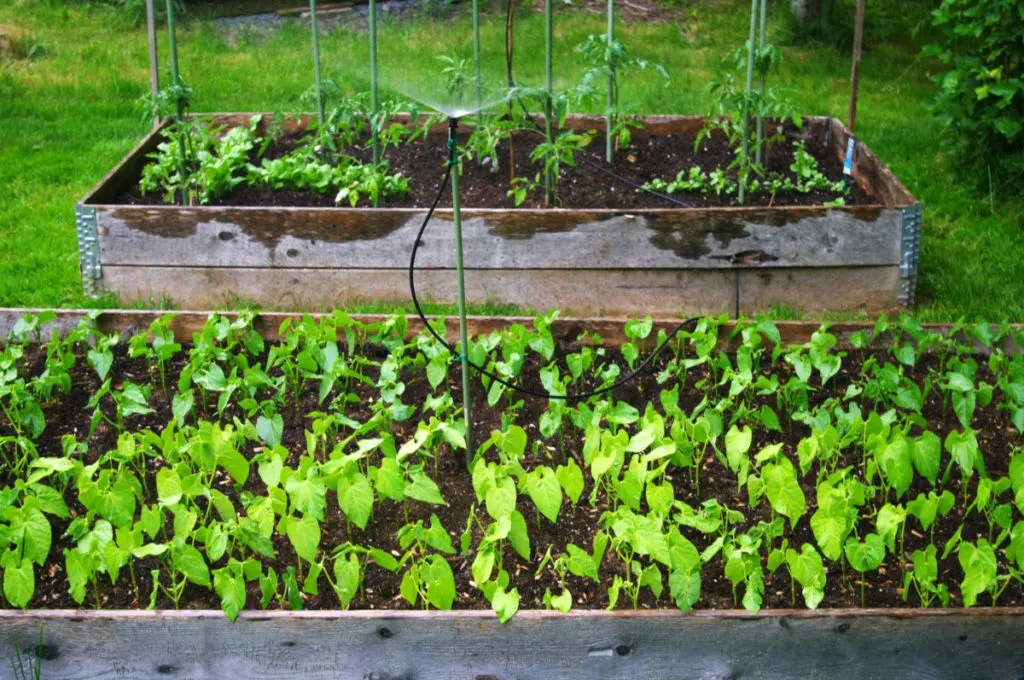
Garden hose timers are relatively inexpensive and easy to set up. I would suggest setting the timer a couple of days before you leave so you can monitor the output and adjust it as necessary. You don’t want to come home to a soggy garden because you assumed it needed to be watered longer than it did.
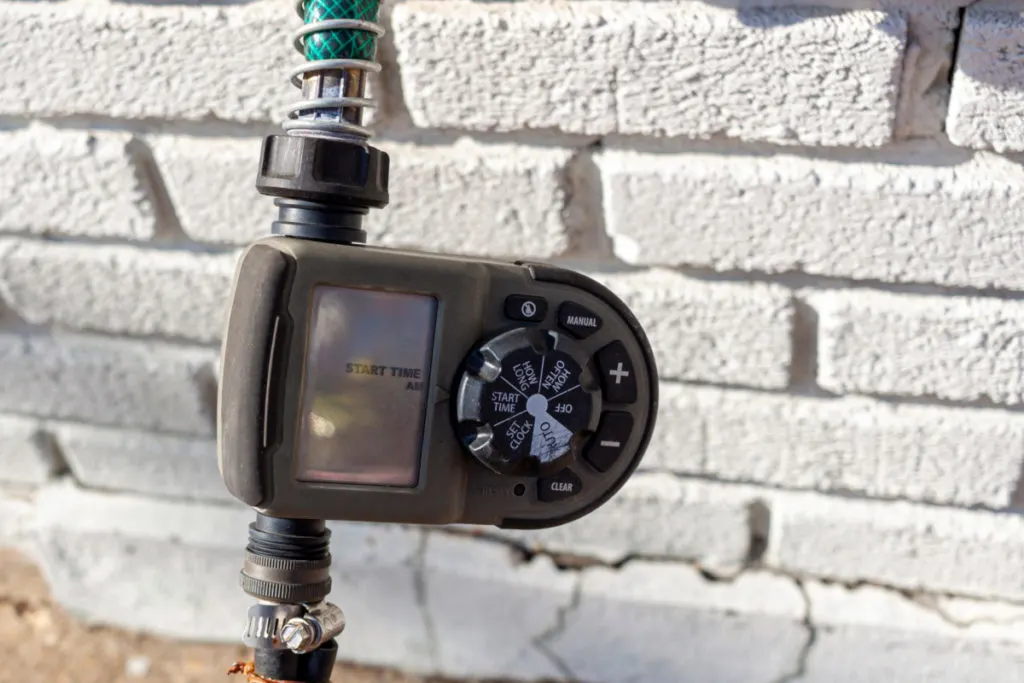
Slow Drip Bottles and Hose
Believe it or not, you’ve got several easy DIY options when it comes to a temporary slow-release watering system.
One of the simplest methods of watering plants while you’re away is to fill a wine bottle or empty water bottle with water and then invert it into the soil. Push the neck of the bottle into the soil and give it a little twist. The water will slowly empty into the soil as it’s needed.
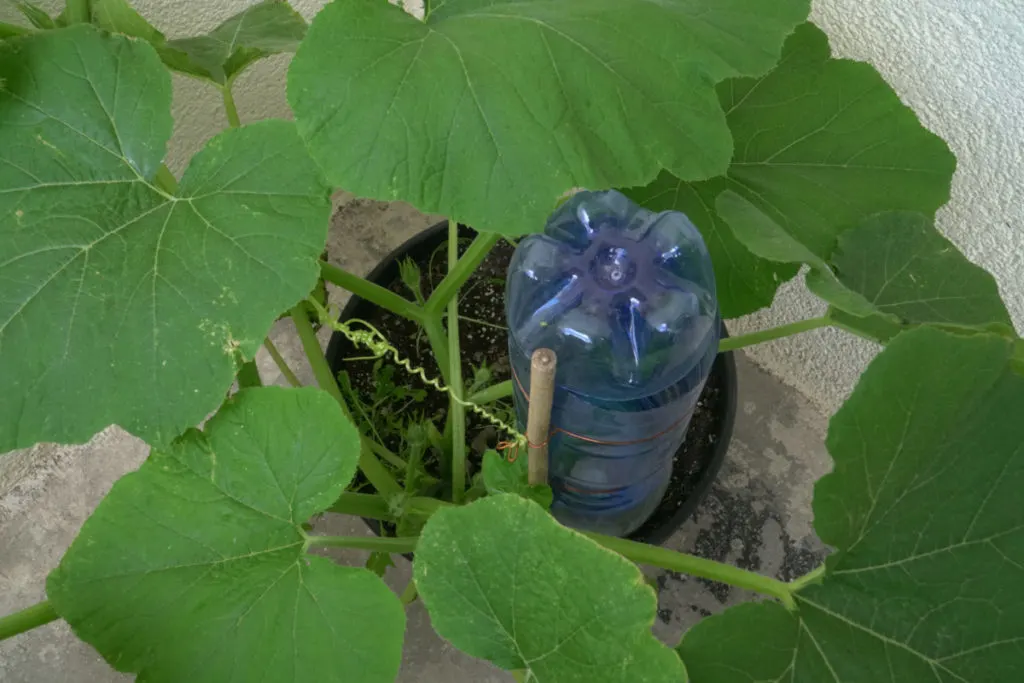
Again, you may wish to try this out a few days ahead of your travel. This way, you will know if you need to add a couple more.
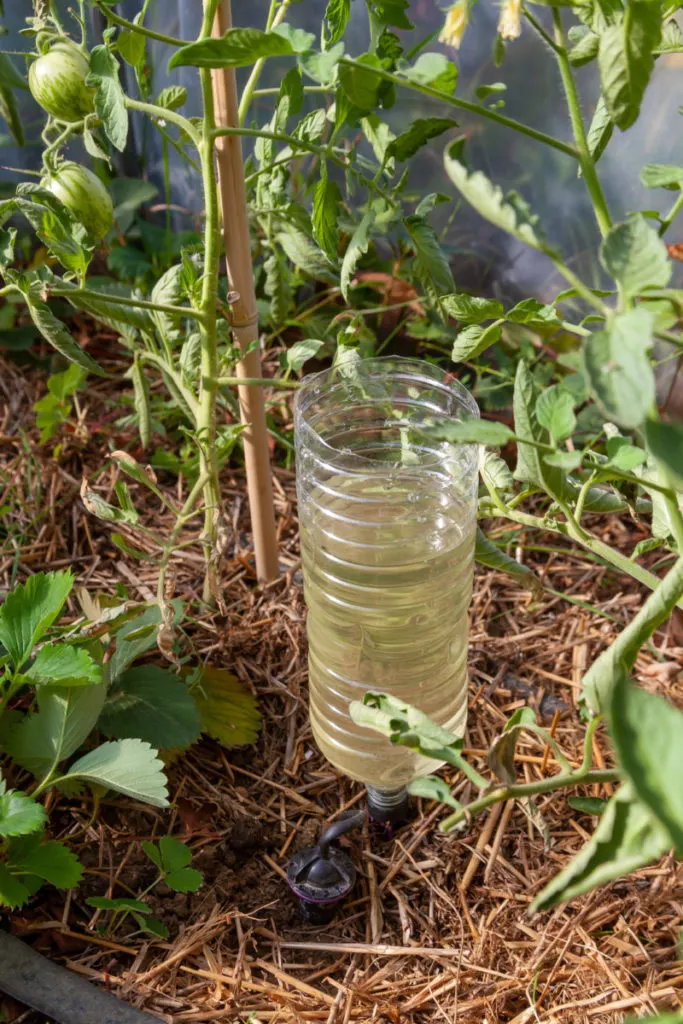
You can also attach one of these cool irrigation spikes to your bottle to control the flow of water.
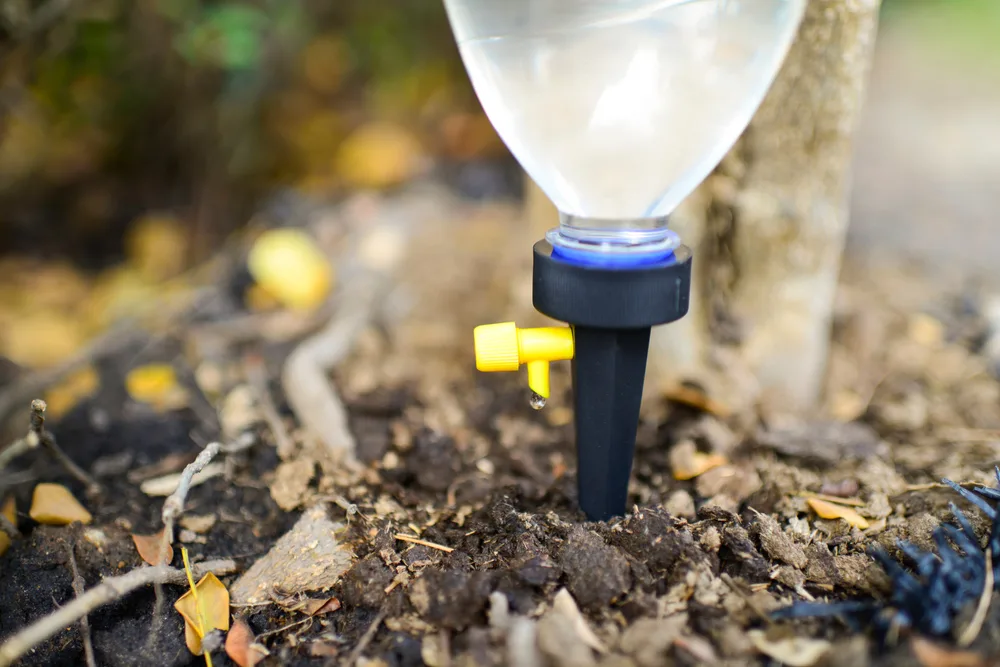
Another easy method to slowly water your garden is with a one-gallon plastic container, such as an empty milk or water jug.
Fill the jug with water and cap it tightly. Poke one or two small holes in the bottom of the jug, and nestle it down in the dirt. Place the jug close to the base of the plant and in direct contact with the dirt. You may need to move away some of the mulch. The water will slowly seep into the soil.
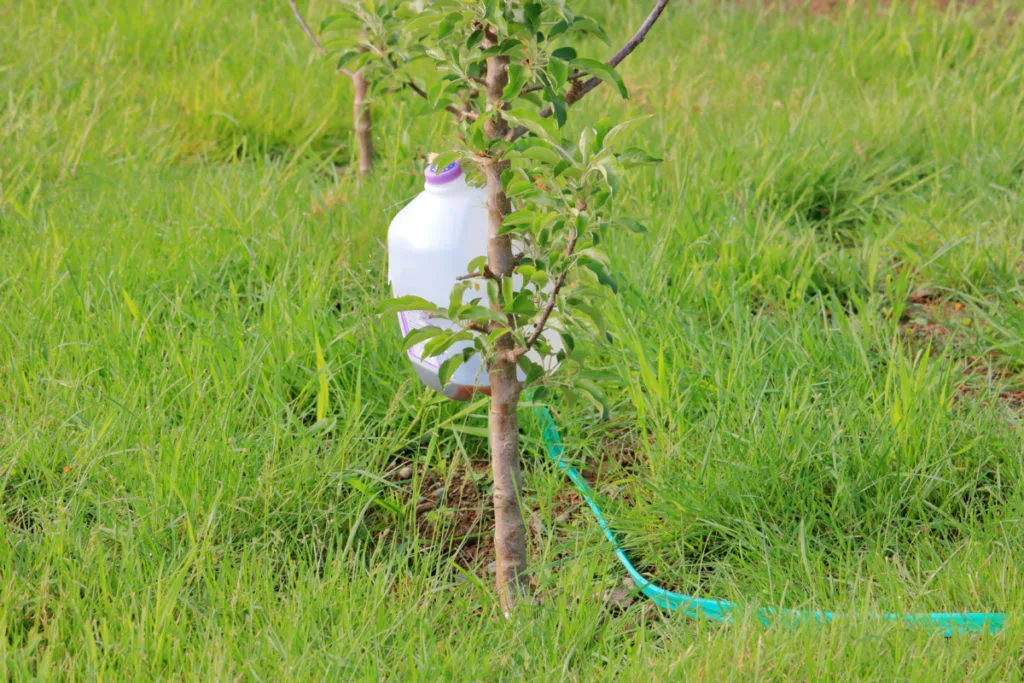
Make a gravity-fed drip line with a piece of garden hose and a gallon jug. Attach the hose to the jug and thread the hose throughout your garden. Pierce the hose where it lays across the root zone of plants.
Or, make simple drip lines for each individual plant with a water bottle with a small hole pierced in the bottom. Secure the water bottle to a dowel pushed into the dirt next to the plant.
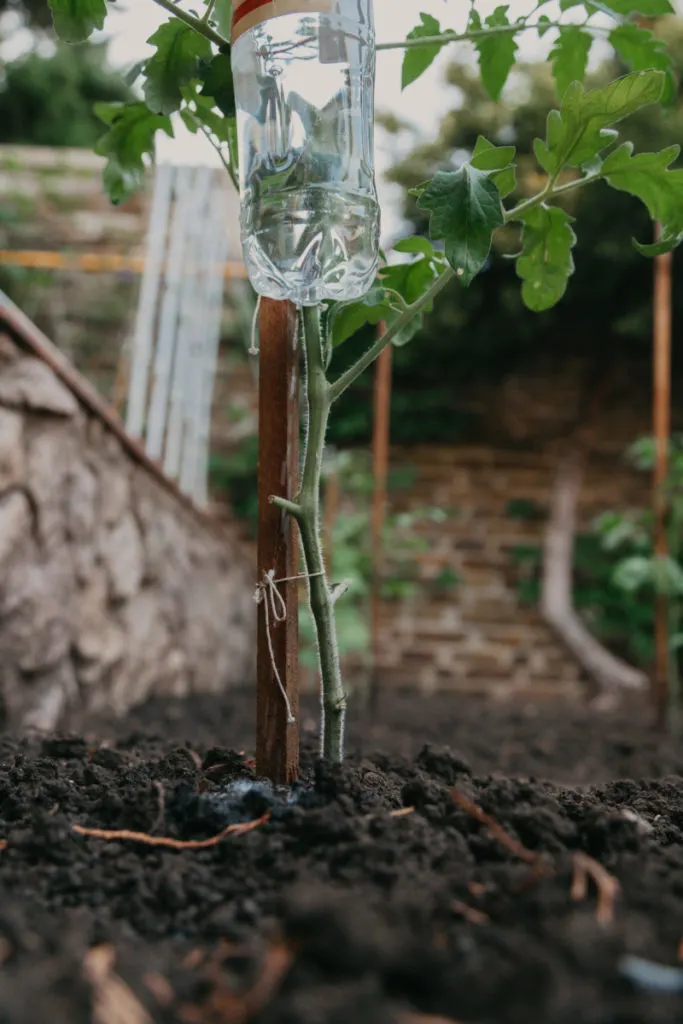
Rain Barrel and Drip Hose
If you’ve got a rainwater collection set up, consider adding a drip hose to the barrel. You can use collected rain to water your garden slowly.
Container Gardening
Plants in containers need more frequent watering in general, so container gardens need a little extra care when it comes to going out of town. You’ll want to make sure you follow the prep guidelines outlined earlier when it comes to containers.
If it’s possible, move all of your containers to a shady area and group them together. Try to keep them someplace where they can still receive water if it rains.
The water bottle method is a great way to keep container gardens in good shape while you’re away.
To Diaper or Not to Diaper?
I’ve seen several sites that suggest using polymers inside baby diapers. By adding the diaper gel to the soil, it locks in moisture. However, there isn’t enough information to determine whether this is safe to do for vegetable gardens or not. So, we can’t recommend it one way or the other.
Ask a Friend or Neighbor
As wonderful as all of these watering options are, I don’t use any of them. I use the time-honored tradition of asking a friend or neighbor to check in on the garden and water it for me.
At the end of the day, your garden will make out better if an actual human can lay eyes on it, not just water. Try to make the whole process as easy as possible. Your friend is more likely to follow through if it isn’t a terribly detailed chore. Group container plants together, leave the garden hose unrolled, and the watering can handy.
If you’re going to go this route, I highly suggest telling them to help themselves to veggies while they garden-sit for you. Again, encouraging them to pick as they like will give them more incentive to check in on your garden frequently.
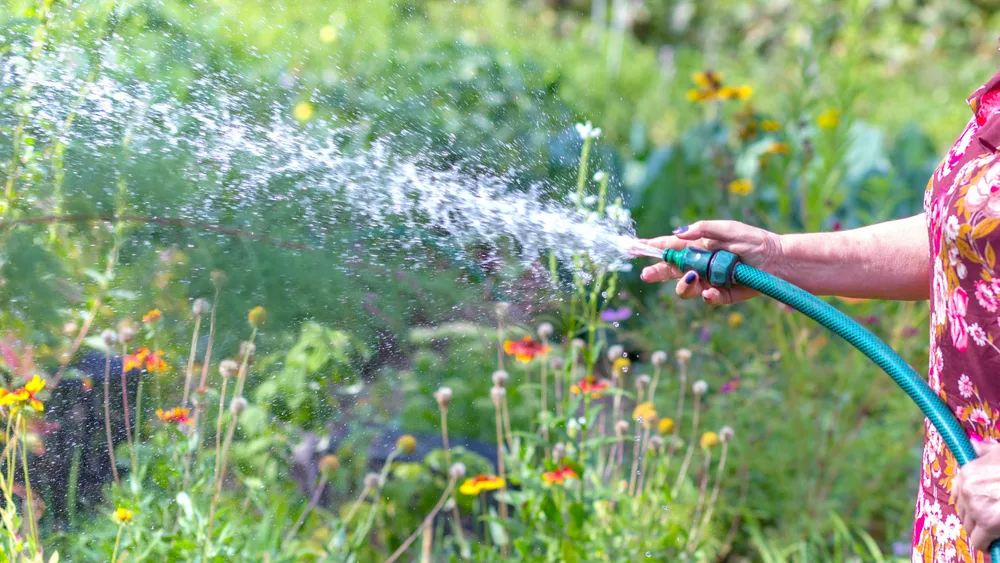
I also like to swing by with a small token of thanks once I return home, something like a nice bottle of wine or a gift card to a favorite local spot.
And finally, if you’re asking a friend or neighbor to garden-sit for you, make yourself available to return the favor.
When it’s time to hit the road, you’ll be able to enjoy your vacation knowing your garden is taken care of.
So get out there and make some memories. Pack up and get away from it all. Your garden will be waiting for you when you return. And who knows, you may come back and be pleasantly surprised at how much your garden has grown while you’re away.

Get the famous Rural Sprout newsletter delivered to your inbox.
Including Sunday musings from our editor, Tracey, as well as “What’s Up Wednesday” our roundup of what’s in season and new article updates and alerts.

